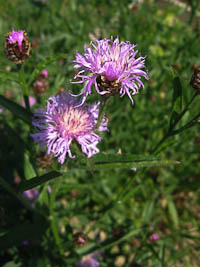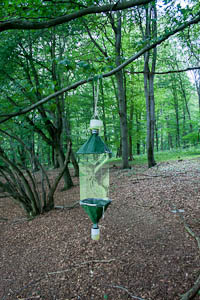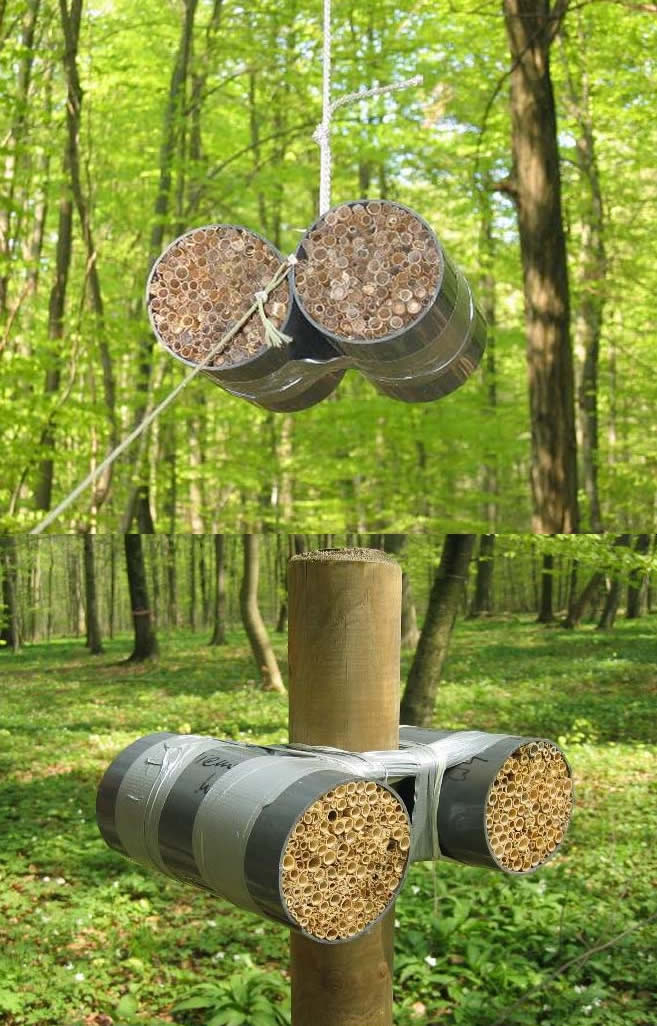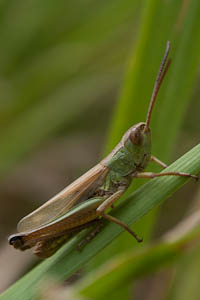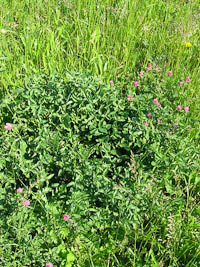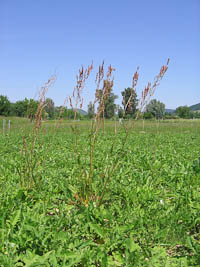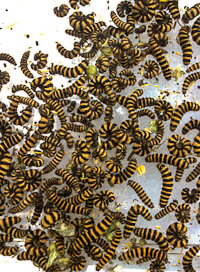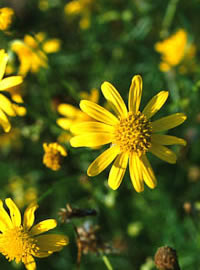Publication list of Christoph Scherber
last edited on 7th October 2015
63 peer-reviewed publications; 4 publications highlighted by Faculty of 1000; c. 80 other publications, > 1100 citations; Covered in >50 newspaper articles, magazines and other media.
- Top 5 publications
- Peer-reviewed publications
- Accepted / in review
- In preparation
- Theses
- Conference Proceeedings
- Talks
- Posters
- Books / others
- E-Books
Top 5 publications
![]() Scherber C et al. (2010) Bottom-up effects of plant diversity on multitrophic interactions in a biodiversity experiment. Nature 468, 553–556
Scherber C et al. (2010) Bottom-up effects of plant diversity on multitrophic interactions in a biodiversity experiment. Nature 468, 553–556
DOI: http://dx.doi.org/10.1038/nature09492
see also Supplementary material S1 and S2
![]()
![]() Stevnbak K, Scherber C et al. (2012) Interactions between above- and belowground organisms modified in climate change experiments. Nature Climate Change (published online 20th May 2012)
Stevnbak K, Scherber C et al. (2012) Interactions between above- and belowground organisms modified in climate change experiments. Nature Climate Change (published online 20th May 2012)
![]()
DOI: http://dx.doi.org/10.1038/nclimate1544
![]()
![]() Scherber C, Heimann J, Köhler G, Mitschunas N, Weisser WW (2010) Functional identity versus species richness: herbivory resistance in plant communities. Oecologia 163:707-717
Scherber C, Heimann J, Köhler G, Mitschunas N, Weisser WW (2010) Functional identity versus species richness: herbivory resistance in plant communities. Oecologia 163:707-717
![]() © Springer (Open Access by institutional agreement); DOI: http://dx.doi.org/10.1007/s00442-010-1625-1
© Springer (Open Access by institutional agreement); DOI: http://dx.doi.org/10.1007/s00442-010-1625-1
![]() Scherber C, Milcu A, Partsch S, Scheu S, Weisser, WW (2006) The effects of plant diversity and insect herbivory on performance of individual plant species in experimental grassland.
Journal of Ecology 94:922-931.
Scherber C, Milcu A, Partsch S, Scheu S, Weisser, WW (2006) The effects of plant diversity and insect herbivory on performance of individual plant species in experimental grassland.
Journal of Ecology 94:922-931.
DOI: http://dx.doi.org/10.1111/j.1365-2745.2006.01144.x
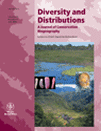
![]() Scherber C, Crawley MJ, Porembski S (2003) The effects of herbivory and competition on the invasive alien plant Senecio inaequidens (Asteraceae). Diversity and Distributions 9:415-426.
Scherber C, Crawley MJ, Porembski S (2003) The effects of herbivory and competition on the invasive alien plant Senecio inaequidens (Asteraceae). Diversity and Distributions 9:415-426.
DOI: http://dx.doi.org/10.1046/j.1472-4642.2003.00049.x
Peer-reviewed publications
2015
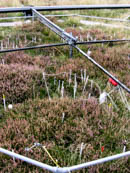
![]() [63] Insect responses to interacting global change drivers in managed ecosystems
[63] Insect responses to interacting global change drivers in managed ecosystems
by Scherber C (2015)
Current Opinion in Insect Science (accepted for publication)

![]() [62] 10 Years Later: Revisiting Priorities for Science and Society a Decade after the Millennium Assessment.
[62] 10 Years Later: Revisiting Priorities for Science and Society a Decade after the Millennium Assessment.
by Mulder C, Bennett E, Bohan D, Bonkowski M, Carpenter SR, Chalmers R, Cramer W, Durance I, Eisenhauer N, Fontaine C, Haughton AJ, Hettelingh J-P, Hines J, Huston MA, Jeppesen E, Krumins JA, Ma A, Mace, GM, Mancinelli G, McLaughlin O, Naeem S, Pascual U, Peñuelas J, Pettorelli N, Pocock MJO, Raffaelli D, Rasmussen JJ, Rusch GM, Scherber C, Setälä H, Vacher C, Voigt W, Vonk AH, Wood SA, Woodward G (2015)
Advances in Ecological Research (in press)

![]() [61] Towards an integration of biodiversity and food web theory to understand connections between multiple ecosystem functions and services
[61] Towards an integration of biodiversity and food web theory to understand connections between multiple ecosystem functions and services
by Hines J, Engel J, van der Putten Wm Weisser W, Melian C, Wagg C, Scherber C et al. (2015)
Advances in Ecological Research (in press)

![]() [60] Landscape simplification filters species traits and drives biotic homogenization
[60] Landscape simplification filters species traits and drives biotic homogenization
by Gámez-Virués S, Perović DJ, Gossner M, Börschig C, Blüthgen N, de Jong H, Simons NK, Klein AM, Krauss J, Maier G, Scherber C, et al. & Westphal C (2015).
Nature Communications (in press)
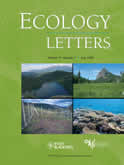
![]() [59] Functional diversity across trophic levels determines herbivore impact on plant community biomass
[59] Functional diversity across trophic levels determines herbivore impact on plant community biomass
by Deraison H, Badenhausser I, Loeuille N, Scherber C, Gross N (2015)
Ecology Letters (published online 6th October 2015)
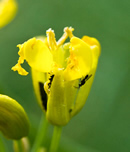
by Beduschi T, Tscharntke T, Scherber C (2015)
Landscape Ecology (published online 5th June 2015)
DOI: http://dx.doi.org/10.1007/s10980-015-0224-2
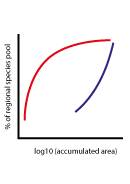
by Rösch V, Tscharntke T, Scherber C & Batary P (2015)
Oecologia (published online 24th April 2015)
DOI: http://dx.doi.org/10.1007/s00442-015-3315-5
by Kormann U, Rösch V, Batáry P, Tscharntke T, Orci KM, Samu F, Scherber C (2015)
Diversity and Distributions (published online 20 March 2015)
DOI: http://dx.doi.org/10.1111/ddi.12324
2014
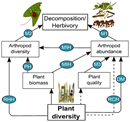
[55] Plant diversity impacts decomposition and herbivory via changes in aboveground arthropods.
by Ebeling A, Meyer ST, Abbas M, Eisenhauer N, Hillebrand H, Lange M, Scherber C, Vogel A, Weigelt A, Weisser WW (2014)
PLoS One 9(9): e106529. DOI: http://dx.doi.org/10.1371/journal.pone.0106529
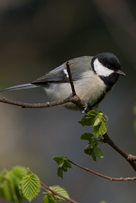
by Batary P, Fronczek S, Normann C, Scherber C, Tscharntke T (2014)
Forest Ecology and Management (published online 26th February 2014)
DOI: http://dx.doi.org/10.1016/j.foreco.2014.02.004
The following graphical abstract nicely summarizes the sampling design we employed:
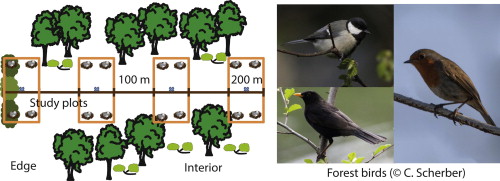
(created using Adobe Illustrator CS6)
by Steckel J, Westphal C, Peters MK, Bellach M, Rothenwöhrer C, Erasmi S, Scherber C et al. (2014)
Biological Conservation (published online March 2014)
DOI: http://dx.doi.org/10.1016/j.biocon.2014.02.015
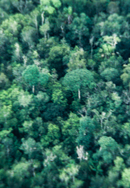 [52] BIOFRAG – A new database for analysing BIOdiversity responses to forest FRAGmentation.
[52] BIOFRAG – A new database for analysing BIOdiversity responses to forest FRAGmentation.
by Pfeifer M et al. (2014)
Ecology and Evolution (published online 1st April 2014)
DOI: http://dx.doi.org/10.1002/ece3.1036
by Liu Y, Rothenwöhrer C, Scherber C, Batáry P, Elek Z, Steckel J, Erasmi S, Tscharntke , Westphal C (2014)
Landscape Ecology (published online February 2014)
DOI: http://dx.doi.org/10.1007/s10980-014-9987-0
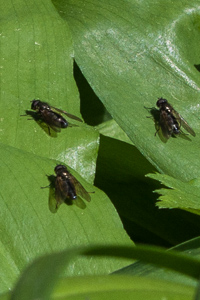 [50] Effects of tree and herb biodiversity on Diptera, a hyperdiverse insect order
[50] Effects of tree and herb biodiversity on Diptera, a hyperdiverse insect order
by Scherber C, Vockenhuber E, Stark A, Meyer H, Tscharntke T (2014)
Oecologia (published online January 2014)
DOI: http://dx.doi.org/10.1007/s00442-013-2865-7
by Everwand G, Rösch V, Tscharntke T & Scherber C (2014)
BMC Ecology 14:1 (highlighted as Editor´s choice)
DOI: http://dx.doi.org/10.1186/1472-6785-14-1
Appendix 1 Species list of the leafhoppers (Auchenorrhyncha) within the GrassMan experiment with food preferences according to Nickel & Remane (2002) and their overall abundance.
Appendix 2 ANOVA-table: Leafhopper species richness vs. Design.
Appendix 3 Mean and standard error of leafhopper responses to experimental design (treatments).
Appendix 4 Box plot showing the effects of herbicide application and cutting frequency on Shannon diversity of grass specialist leafhoppers.
Appendix 5 Experimental design of the Grassman Experiment, showing the Latin rectangle of 12 treatments in 6 replications. Gra- = graminoid reduced plots (=forb enhanced); Forb- =forb reduced (=graminoid enhanced); Con = Control (no herbicide application). The grey area around and between the plots is mown monthly. Plot size 15 m x 15 m, space between plots 3 m, between blocks 5 m
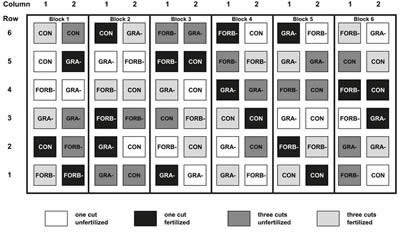
Appendix 6 F and p-values of generalized linear models testing for effects of sampling method in combination with design treatments.
Appendix 7 Comparison of the two different sampling methods in combination with functional group manipulation and cutting frequency. (a) leafhopper species richness; (b) leafhopper Shannon diversity (eH´); (c) leafhopper abundance.
Appendix 8 ANOVA-table: Leafhopper abundance vs. Design.
2013
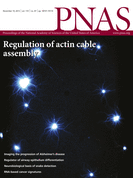 [48] Inter-annual variation in land-use intensity enhances grassland multidiversity
[48] Inter-annual variation in land-use intensity enhances grassland multidiversity
by Allan E, Bossdorf O, Dormann CF, Prati D, Gossner M, Tscharntke T, Blüthgen N, Bellach M, Birkhofer K, Boch S, Böhm S, Börschig C, Chatzinotas A, Christ S, Daniel R, Diekötter D, Fischer C, Friedl T, Glaser K, Hallman C, Hodac L, Hölzel N, Jung K, Klein AM, Klaus V, Kleinebecker T, Krauss J, Lange M, Morris EK, Müller J, Nacke H, Pašalic EK, Rillig M, Rothenwöhrer C, Schall P, Scherber C, et al. (2013)
Proceedings of the National Academy of Sciences (published online 24th December 2013)
DOI: http://dx.doi.org/10.1073/pnas.1312213111
by Seidel D, Leuschner C, Scherber C et al. (2013)
Forest Ecology and Management 310: 366–374
DOI: http://dx.doi.org/10.1016/j.foreco.2013.08.058
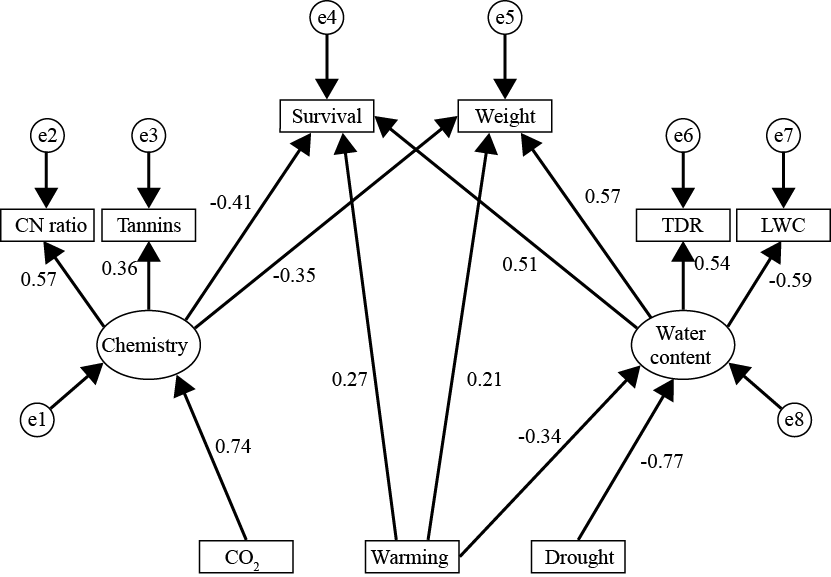 [46] Multi-factor climate change effects on insect herbivore performance
[46] Multi-factor climate change effects on insect herbivore performance
by Scherber C, Gladbach DJ, Stevnbak K, Karsten RJ, Schmidt IK, Michelsen A, Albert KR, Larsen KS, Mikkelsen TN, Beier C, Christensen S (2013)
Ecology and Evolution 3:1449–1460 (June 2013) DOI: http://dx.doi.org/10.1002/ece3.564
![]()
See also images published on Figshare:
Effects of the number of climate change drivers on herbivore performance. Christoph Scherber, David Gladbach, Karen Stevnbak, Rune Juelsborg Karsten, Inger Kappel Schmidt, Anders Michelsen, Kristian Rost Albert, Klaus Steenberg Larsen, Teis Nørgaard Mikkelsen, Claus Beier, Søren Christensen.
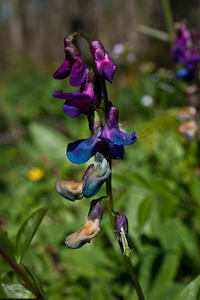
[45] Plant-animal interactions in two forest herbs along a tree and herb diversity gradient
by Vockenhuber E, Kabouw P, Tscharntke T, Scherber C (2013)
Plant Ecology and Diversity (published online 6 March 2013)
DOI: http://dx.doi.org/10.1080/17550874.2013.782368
[44] Functionally and phylogenetically diverse plant communities key to soil biota
by Milcu A, Allan E, Roscher C, Jenkins T, Bessler H, Buchmann N, Buscot F, Engels C, Flynn D, Gubsch M, Lipowsky A, Renker C, Scherber C, Schmid B, Schulze E.D., Thebault E, Weigelt A, Weisser W.W., Scheu S & Eisenhauer N (2013)
Ecology (published online March 2013)
DOI: http://dx.doi.org/10.1890/12-1936.1
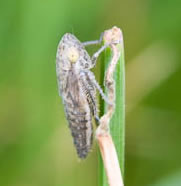 [43] Landscape composition, connectivity and fragment size drive effects of grassland fragmentation on insect communities
[43] Landscape composition, connectivity and fragment size drive effects of grassland fragmentation on insect communities
by
Rösch V, Tscharntke T, Scherber C, Batáry P (2013)
Journal of Applied Ecology 50:387–394.
DOI: http://dx.doi.org/10.1111/1365-2664.12056
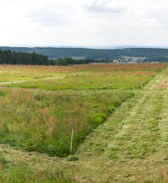 [42] Slug responses to grassland cutting and fertilization in a plant functional group removal experiment
[42] Slug responses to grassland cutting and fertilization in a plant functional group removal experiment
by Everwand G, Scherber C, Tscharntke T (2013)
Acta Oecologica 48:62–68.
DOI: http://dx.doi.org/10.1016/j.actao.2013.01.015
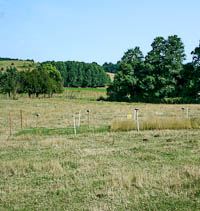
[41] Grassland management for stem-boring insects: Abandoning small patches is better than reducing overall intensity
by Rothenwöhrer C, Scherber C, Tscharntke T (2013)
Agriculture, Ecosystems and Environment 167:38–42
DOI: http://dx.doi.org/10.1016/j.agee.2013.01.005
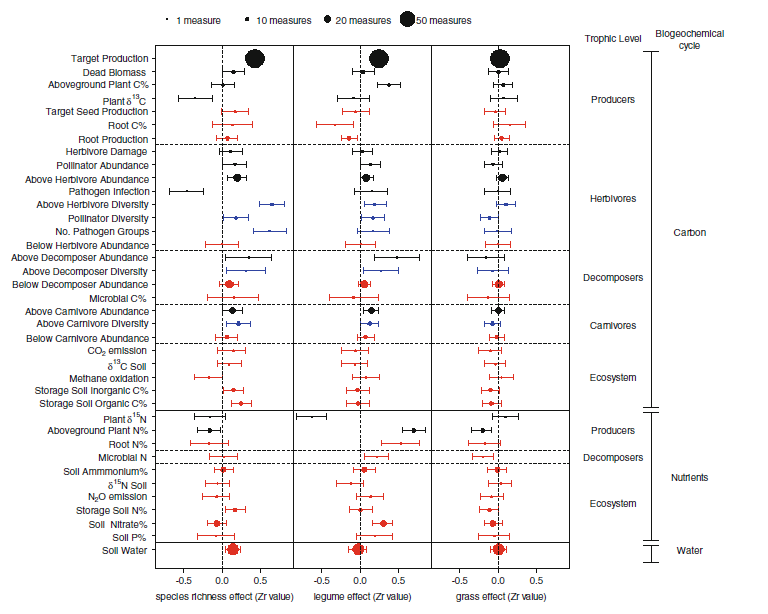 [40] A comparison of the strength of biodiversity effects across multiple functions
[40] A comparison of the strength of biodiversity effects across multiple functions
by Allan E, Weisser W, Fischer M, Schulze E, Weigelt A, Roscher C, Baade J, Barnard RL, Beßler H, Buchmann N, Ebeling A, Eisenhauer N, Engels C, Fergus AJF, Gleixner G, Gubsch M, Halle S, Klein AM, Kertscher I, Kuu A, Lange M, Le Roux X, Meyer S, Migunova VD, Milcu A, Niklaus PA, Oelmann Y, Pašalić E, Petermann JS, Poly F, Rottstock T, Sabais A, Scherber C et al. (2013)
Oecologia (published online February 2013)
DOI: http://dx.doi.oirg/10.1007/s00442-012-2589-0
2012
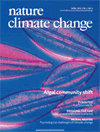
[39] Interactions between above- and belowground organisms modified in climate change experiments
by Stevnbak K§, Scherber C§*, Gladbach D, Beyer C, Mikkelsen TN & S. Christensen (2012)
Nature Climate Change 2, 805–808.
DOI: http://dx.doi.org//10.1038/nclimate1544
§equal contributions;
*corresponding author
By experimentally manipulating atmospheric carbon dioxide concentration, drought, air and soil temperature, and herbivory simultaneously, this study provides evidence that climate change affects interactions between above- and belowground organisms through changes in nutrient availability under field conditions.
![]()
see also Supplementary Material
[38] Landscape-moderated bird nest predation in hedges and forest edges
by Ludwig M, Schlinkert H, Holzschuh A, Fischer C, Scherber C, Trnka A, Tscharntke T, Batáry P (2012).
Acta Oecologica 45: 50–56.
DOI: http://dx.doi.org/10.1016/j.actao.2012.08.008
by Gagic V, Hänke S, Thies C, Scherber C, Tomanovic Z, Tscharntke T (2012)
Oecologia 170:1099-109.
DOI: http://dx.doi.org/10.1007/s00442-012-2366-0
by Blüthgen N, Dormann CF, Prati D, Klaus VH, Kleinebecker T, Hölzel N, Alt F, Boch S, Gockel S, Hemp A, Müller J, Nieschulze J, Renner SC, Schöning I, Schumacher U, Socher SA, Wells K, Birkhofer K, Buscot F, Oelmann Y, Rothenwöhrer C, Scherber C, Tscharntke T, Weiner CN, Fischer M, Kalko EKV; Linsenmair KE, Schulze ED, Weisser WW (2012)
Basic and Applied Ecology (published online 10 May 2012).
DOI: http://dx.doi.org/10.1016/j.baae.2012.04.001
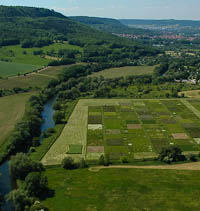 [35] Herbivore and pollinator responses to grassland management intensity along experimental changes in plant species richness
[35] Herbivore and pollinator responses to grassland management intensity along experimental changes in plant species richness
by Hudewenz A, Klein AM, Scherber C, Stanke L, Tscharntke T, Vogel A, Weigelt A, Weisser WW, Ebeling A (2012)
Biological Conservation 150: 42-52
DOI: http://dx.doi.org/10.1016/j.biocon.2012.02.024
[34] Combining biodiversity conservation with agricultural intensification
by Tscharntke T, Batáry P, Clough Y, Kleijn D, Scherber C, Thies C, Wanger TC, Westphal C (2012)
Book chapter in: Lindenmayer D, Cunningham S, Young A (2012) Land Use Intensification. Effects on Agriculture, Biodiversity and Ecological Processes.
CRC Press / CSIRO Publishing, ISBN 9780643104075. Also available as an e-book
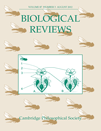 [33] Landscape moderation of biodiversity patterns and processes - eight hypotheses
[33] Landscape moderation of biodiversity patterns and processes - eight hypotheses
by Tscharntke T, Tylianakis J, Rand T, Didham R, Fahrig L, Batary P, Bengtsson J, Clough Y, Crist T, Dormann C, Ewers R, Holt R, Holzschuh A, Klein A, Kremen C, Landis D, Laurance W, Lindenmayer D, Scherber C, Sodhi N, Steffan-Dewenter I, Thies C, van der Putten W, Westphal C (2012)
Biological Reviews 87: 661–685
DOI: http://dx.doi.org//10.1111/j.1469-185X.2011.00216.x
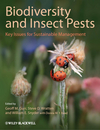 [32] Scale effects in biodiversity and biological control: methods and statistical analysis
[32] Scale effects in biodiversity and biological control: methods and statistical analysis
by Scherber C, Lavandero B, Meyer KM, Perovic D, Visser U, Wiegand K, Tscharntke T (2012).
pp. 123-138 in: Biodiversity and Insect Pests: Key Issues for Sustainable Management, First Edition. Edited by Geoff M. Gurr, Steve D. Wratten, William E. Snyder, Donna M.Y. Read. © 2012 John Wiley & Sons, Ltd.
Published 2012 by John Wiley & Sons, Ltd. (published online 15 May 2012).
DOI: http://dx.doi.org//10.1002/9781118231838.ch8
Download artwork from this chapter as PowerPoint slides
Download tables of this chapter as a pdf file
You are free to download these slides for your own use and teaching purposes. For all other uses please contact the Wiley Permissions Department: permissionsuk@wiley.com
by Brown G, Scherber C, Ramos P, Ebrahim EK (2012)
Flora - Morphology, Distribution, Functional Ecology of Plants 207: 503-511
DOI: http://dx.doi.org/10.1016/j.flora.2012.06.009
2011
 [30] The relationship between agricultural intensification and biological control: experimental tests across Europe
[30] The relationship between agricultural intensification and biological control: experimental tests across Europe
by Thies C, Haenke S, Scherber C, Bengtsson J, Bommarco R, Clement LW, Ceryngier P, Dennis C, Emmerson M, Gagic V, Hawro V, Liira J, Weisser WW, Winqvist C, Tscharntke T (2011).
Ecological Applications 21: 2187-2196
DOI: http://dx.doi.org/:10.1890/10-0929.1
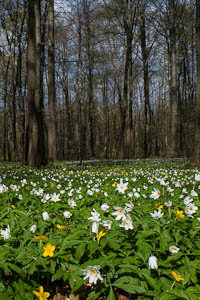 [29] Tree diversity and environmental factors predict herb species richness and cover in Germany's largest connected deciduous forest
[29] Tree diversity and environmental factors predict herb species richness and cover in Germany's largest connected deciduous forest
by Vockenhuber E, Scherber C, Seidel D, Langenbruch C, Meißner M, Tscharntke T (2011)
Perspectives in Plant Ecology, Evolution and Systematics 13:111-119 (published online 14th April 2011)
DOI: http://dx.doi.org/10.1016/j.ppees.2011.02.004
Highlighted as one of the most cited articles since 2009
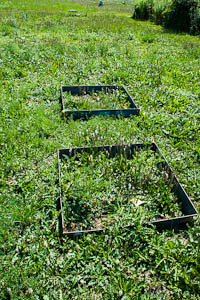 [28] Impact of above and below-ground invertebrates on temporal and spatial stability of grassland of different diversity
[28] Impact of above and below-ground invertebrates on temporal and spatial stability of grassland of different diversity
by Eisenhauer N, Milcu A, Allan E, Nitschke N, Scherber C, Weigelt A, Weisser WW, Scheu S (2011)
Journal of Ecology 99:572–582, March 2011 (published online 19th January 2011)
DOI: http://dx.doi.org/10.1111/j.1365-2745.2010.01783.x
by Gladbach DJ, Holzschuh A, Scherber C, Thies C, Dormann CF, Tscharntke T (2011)
Oecologia 166:433-41 (published online 13th December 2010).
DOI: http://dx.doi.org/10.1007/s00442-010-1870-3

[26] Multifunctional shade-tree management in tropical agroforestry landscapes - a review
by Tscharntke T, Clough Y, Bhagwat S, Buchori D, Faust H, Hertel D, Hölscher D, Juhrbandt J, Kessler M, Perfecto, I, Scherber C, Schroth G, Veldkamp E, Wanger T (2011)
Journal of Applied Ecology 48:619–629, June 2011 ( published online 31.01.2011)
DOI: http://dx.doi.org/10.1111/j.1365-2664.2010.01939.x
2010
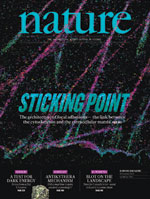
[25] Bottom-up effects of plant diversity on multitrophic interactions in a biodiversity experiment ![]()
published online 27th October 2010; see also Supplementary material S1 and S2
by Scherber C, Nico Eisenhauer, Wolfgang W. Weisser, Bernhard Schmid, Winfried Voigt, Markus Fischer, Ernst-Detlef Schulze, Christiane Roscher, Alexandra Weigelt, Eric Allan, Holger Beßler, Michael Bonkowski, Nina Buchmann, François Buscot, Lars W. Clement, Anne Ebeling, Christof Engels, Stefan Halle, Ilona Kertscher, Alexandra-Maria Klein, Robert Koller, Stephan König, Esther Kowalski, Volker Kummer, Annely Kuu, Markus Lange, Dirk Lauterbach, Cornelius Middelhoff, Varvara D. Migunova, Alexandru Milcu, Ramona Müller, Stephan Partsch, Jana S. Petermann, Carsten Renker, Tanja Rottstock, Alexander Sabais, Stefan Scheu, Jens Schumacher, Vicky M. Temperton & Teja Tscharntke (2010)
Nature 468, 553–556 (25 November 2010) (published online 27th October 2010)
DOI: http://dx.doi.org/10.1038/nature09492Related content:
Official press release by the University of Göttingen
Official press release by the Helmholtz Centre for Environmental Research
Official press release by the Forschungszentrum Jülich
[24] Methane emissions from tank bromeliads in neotropical forests
by Martinson G, Werner FA, Scherber C, Conrad R, Corre MD, Flessa H, Wolf K, Klose M, Gradstein SR, Veldkamp E (2010)Nature Geoscience (Published online 17 October 2010)
DOI: http://dx.doi.org/10.1038/ngeo980
Related content:
article: Biogeochemistry: Cryptic wetlands.
by Joseph B. Yavitt (2010), Nature Geoscience, DOI: dx.doi.org/doi:10.1038/ngeo999 (Published online 17 October 2010).
by Proulx R, Wirth C, Voigt W, Weigelt A, Roscher C, Attinger S, Baade J, Barnard RL, Buchmann N, Buscot F, Eisenhauer N, Fischer M, Gleixner G, Halle S, Hildebrandt A, Kowalski E, Kuu A, Lange M, Milcu A, Niklaus PA, Oelmann Y, Rosenkranz S, Sabais A, Scherber C, Scherer-Lorenzen M, Scheu S, Schulze ED, Schumacher J, Schwichtenberg G, Soussana J-F, Temperton VM, Weisser WW, Wilcke W, Schmid B (2010)
PLoS One 5(10): e13382.
DOI: http://dx.doi.org/10.1371/journal.pone.0013382
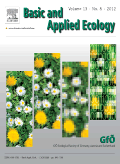 [22] Book review: Biodiversity, Ecosystem Functioning, and Human Wellbeing—An Ecological and Economic Perspective
[22] Book review: Biodiversity, Ecosystem Functioning, and Human Wellbeing—An Ecological and Economic Perspective
by Scherber C (2010)
Basic and Applied Ecology (published online)
DOI: http://dx.doi.org/10.1016/j.baae.2010.07.005
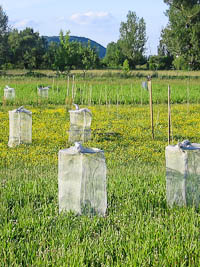 [21] Functional identity versus species richness: herbivory resistance in plant communities
[21] Functional identity versus species richness: herbivory resistance in plant communities
by Scherber C, Heimann J, Köhler G, Mitschunas N, Weisser WW (2010)
Oecologia (online first)
DOI: http://dx.doi.org/10.1007/s00442-010-1625-1
© Springer (Open Access by institutional agreement)
by Scherber C, Mwangi PN, Schmitz M, Scherer-Lorenzen M, Beßler H, Eisenhauer N, Migunova VD, Weisser WW, Schulze ED, Schmid B (2010)
Journal of Plant Ecology 3 (2): 99-108 (highlighted as most frequently read in July 2011)
DOI: http://dx.doi.org/10.1093/jpe/rtq003
© Oxford Journals
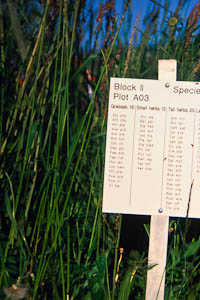
[19] The Jena-Experiment: 6 years of data from a grassland biodiversity experiment
by Weigelt A, Marquard E, Temperton VM., Roscher C, Scherber C, Mwangi PN, Buchmann N, Schmid B, Schulze ED, Weisser WW. (2010)
Ecology 91(3), pp. 930-931
DOI: http://dx.doi.org/10.1890/09-0863.1
© Ecological Society of America
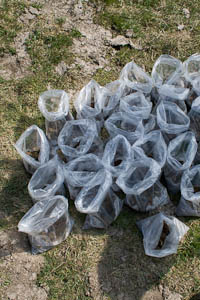
[18] Plant diversity effects on soil microorganisms support the singular hypothesis
by Eisenhauer N, Milcu A, Bessler H, Engels C, Gleixner G, Habekost M, Partsch S, Sabais ACW, Scherber C, Steinbeiss S, Weigelt A, Weisser WW, Scheu S (2010)
Ecology 91(2), pp. 485-496
DOI: http://dx.doi.org/10.1890/08-2338.1
© Ecological Society of America
 [17] Book Review: Species Richness - Patterns in the Diversity of Life
[17] Book Review: Species Richness - Patterns in the Diversity of Life
by Scherber C (2010)
Basic and Applied Ecology 11(1), p. 95
DOI: http://dx.doi.org/10.1016/j.baae.2009.10.002
by Nitschke N, Ebeling A, Rottstock T, Scherber C, Fischer M, Tscharntke T, Weigelt A, Middelhoff C, Weisser WW (2010)
Journal of Plant Ecology (published online)
DOI: http://dx.doi.org/10.1093/jpe/rtp036
© Oxford Journals
2009
[15] Tree diversity drives abundance and spatiotemporal β-diversity of true bugs (Heteroptera)
by Sobek S, Gossner M, Scherber C, Steffan-Dewenter I, Tscharntke T (2009)
Ecological Entomology 34, pp. 772 - 782.
DOI: http://dx.doi.org/10.1111/j.1365-2311.2009.01132.x
by Sobek S, Tscharntke T, Scherber C, Schiele S & Steffan-Dewenter I (2009)
Forest Ecology and Management 258 (5), 609-615
DOI: http://dx.doi.org/10.1016/j.foreco.2009.04.026
(image copyright: Susanne Schiele)
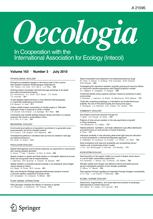
[13] Earthworm and belowground competition effects on plant productivity in a plant diversity gradient
by Eisenhauer N, Milcu A, Nitschke N, Sabais, ACW, Scherber C, Scheu S. (2009)
Oecologia 161 (2), pp. 291-301
DOI: http://dx.doi.org/10.1007/s00442-009-1374-1
© Springer (Open Access by institutional agreement)
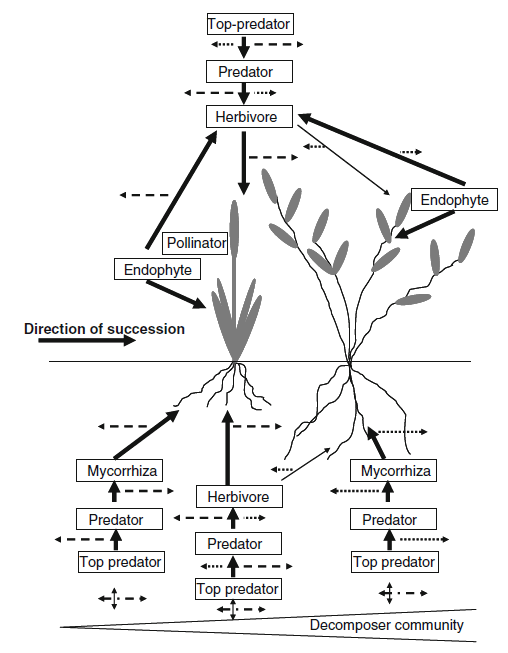 [12] Empirical and theoretical challenges and possible solutions in aboveground-belowground ecology
[12] Empirical and theoretical challenges and possible solutions in aboveground-belowground ecology
by van der Putten WH, Bardgett RD, de Ruiter PC, Hol WHG, Meyer KM, Bezemer TM, Bradford MA, Christensen S, Eppinga MB, Fukami R, Hemerik L, Molofsky J, Schädler M, Scherber C, Strauss SY, Vos M, Wardle DA (2009)
Oecologia 161(1), pp. 1-14
DOI: http://dx.doi.org/10.1007/s00442-009-1351-8
© Springer (Open Access by institutional agreement)
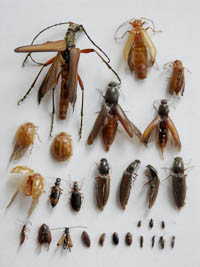 [11] Spatiotemporal changes of beetle communities across a tree diversity gradient
[11] Spatiotemporal changes of beetle communities across a tree diversity gradient
by Sobek S, Steffan-Dewenter I, Scherber C & Tscharntke T (2009)
Diversity and Distributions 15 (4), pp.660 - 670
DOI: http://dx.doi.org/10.1111/j.1472-4642.2009.00570.x
Image copyright: Susanne Schiele, Stephanie Sobek
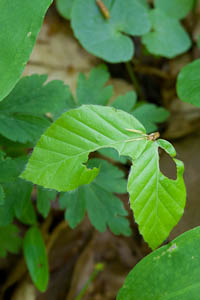
[10] Sapling herbivory, invertebrate herbivores and predators across a natural tree diversity gradient in Germany´s largest connected deciduous forest
by Sobek S, Scherber C, Steffan-Dewenter I, Tscharntke T (2009)
Oecologia 160(2): 279-88
DOI: http://dx.doi.org/10.1007/s00442-009-1304-2
© Springer (Open Access by institutional agreement)
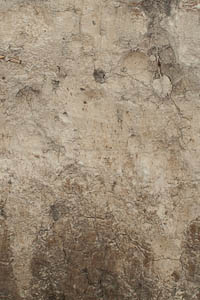
[9] No interactive effects of pesticides and plant diversity on soil microbial parameters
by Eisenhauer N, Klier M, Partsch S, Sabais ACW, Scherber C, Weisser WW & Scheu S (2009)
Applied Soil Ecology 42, 1, 31-36
DOI: http://dx.doi.org/10.1016/j.apsoil.2009.01.005
2008
[8] Diversity and beyond: Plant functional identity determines herbivore performance
by Specht J, Scherber C, Koehler G, Weisser WW (2008)
Journal of Animal Ecology 77, 1047–1055
DOI: http://dx.doi.org/10.1111/j.1365-2656.2008.01395.x
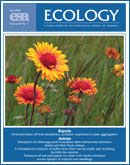
[7] Earthworms and legumes control litter decomposition in a plant diversity gradient
by Milcu A, Partsch S, Scherber C, Weisser WW, Scheu S (2008)
Ecology 89(7), 2008, 1872–1882
DOI: http://dx.doi.org/10.1890/07-1377.1
© Ecological Society of America
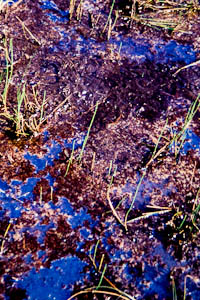
[6] Groundwater level controls CO2, N2O and CH4 fluxes of three different hydromorphic soil types of a temperate forest ecosystem
by Jungkunst H, Flessa H, Scherber C, Fiedler S. (2008)
Soil Biology and Biochemistry 40 (8), pp. 2047-2054
DOI: http://dx.doi.org/10.1016/j.soilbio.2008.04.015
2007
[5] Niche pre-emption increases with species richness in experimental plant communities
by Mwangi PN, Schmitz M, Scherber C, Roscher C, Schumacher J, Scherer-Lorenzen M, Weisser WW, Schmid B (2007)
Journal of Ecology 95, pp. 65-78
DOI: http://dx.doi.org/10.1111/j.1365-2745.2006.01189.x
2006
by Scherber C, Milcu A, Partsch S, Scheu S, Weisser, WW (2006)
Journal of Ecology 94, pp. 922-931, Blackwell Publishing, Oxford
DOI: http://dx.doi.org/10.1111/j.1365-2745.2006.01144.x
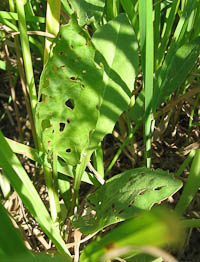
[3] Effects of plant diversity on invertebrate herbivory in experimental grassland
by Scherber C, Mwangi PN, Temperton VM, Roscher C, Schumacher J, Schmid B, Weisser WW (2006)
Oecologia 147, pp. 489-500, Springer Berlin, Heidelberg, New York.
DOI: http://dx.doi.org/10.1007/s00442-005-0281-3
2005
(none)
2004
by Scherber C, Crawley MJ, Porembski S (2004) In: Kuehn, I. & Klotz, S. (eds.) Biological Invasions - Challenges for Science.
Neobiota 3: 41-52, Berlin.
[see http://www.pensoft.net/journals/neobiota for details on this series]
2003
by Scherber C, Crawley MJ, Porembski S (2003)
Diversity and Distributions 9, pp. 415-426, Blackwell Publishing, Oxford.
DOI: http://dx.doi.org/10.1046/j.1472-4642.2003.00049.x
Manuscripts accepted for publication
Manuscripts under review
![]() Kormann U, Tscharntke T, Betts MG, Robinson WD, Hadley AS, Scherber C (2015) Old growth forest mitigates the erosion of tropical bird communities in human modified landscapes. Proceedings of the Royal Society Series B (under review)
Kormann U, Tscharntke T, Betts MG, Robinson WD, Hadley AS, Scherber C (2015) Old growth forest mitigates the erosion of tropical bird communities in human modified landscapes. Proceedings of the Royal Society Series B (under review)
![]() Venjakob C, Klein AM, Ebeling A, Tscharntke T, Scherber C (2015) Plant diversity increases spatio-temporal niche complementarity in plant-pollinator interactions. Ecology and Evolution (transferred)
Venjakob C, Klein AM, Ebeling A, Tscharntke T, Scherber C (2015) Plant diversity increases spatio-temporal niche complementarity in plant-pollinator interactions. Ecology and Evolution (transferred)
![]() Tiede J, Wemheuer B, Traugott M, Daniel R, Tscharntke T, Ebeling A, Scherber C (2015) Using next-generation sequencing to analyze trophic and non-trophic interactions in a biodiversity experiment. Peerage of Science (under review)
Tiede J, Wemheuer B, Traugott M, Daniel R, Tscharntke T, Ebeling A, Scherber C (2015) Using next-generation sequencing to analyze trophic and non-trophic interactions in a biodiversity experiment. Peerage of Science (under review)
Beduschi T, Tscharntke T, Kormann U, Scherber C (2015) Semi-natural habitats increase spatial similarity of pollinator communities within agricultural mosaic landscapes. Oecologia (resubmitted)
Invited resubmissions
![]() Normann C, Tscharntke T, Scherber C (2015) Interacting effects of forest stratum, edge and tree diversity on beetle communities. Forest Ecology and Management (major revisions)
Normann C, Tscharntke T, Scherber C (2015) Interacting effects of forest stratum, edge and tree diversity on beetle communities. Forest Ecology and Management (major revisions)
![]() Normann C, Tscharntke T, Scherber C (2015) How tree diversity and edge-center transitions interact in determining herb layer vegetation in Germany’s largest deciduous forest. Journal of Plant Ecology (resubmission invited)
Normann C, Tscharntke T, Scherber C (2015) How tree diversity and edge-center transitions interact in determining herb layer vegetation in Germany’s largest deciduous forest. Journal of Plant Ecology (resubmission invited)
![]() Bohan D and the Quintessence Consortium (2015) Networking our way to better Ecosystem Service provision. Trends in Ecology and Evolution (resubmission invited)
Bohan D and the Quintessence Consortium (2015) Networking our way to better Ecosystem Service provision. Trends in Ecology and Evolution (resubmission invited)
Madeira FN, Elek Z, Kormann U, Pons X, Rösch V, Samu F, Scherber C et al. (2015) Predator spillover from cropland to protected calcareous grassland – the importance of buffer habitats. Agriculture, Ecosystems and Environment (resubmission invited)
In preparation (draft available)
Kormann U, Scherber C, Tscharntke T, Klein N, Larbig M, Hadley AS, Betts MG (2015) Corridors restore hummingbird-mediated pollination in fragmented tropical forest landscapes. (in preparation)
Normann C, Tscharntke T, Gallé R, Elek Z, Rose A, Batáry P, Scherber C (2015) Tree diversity and species' traits moderate forest edge responses of ground-dwelling beetles and spiders. (in preparation)
Meyer ST, Ebeling A, Eisenhauer N, Herzog L, Hillebrand H, de Luca E, Milcu A, Pompe S, Abbas M, Bessler H, Engels C, Fischer M, Gleixner G, Habekost M, Klein AM, Kreutziger Y, de Kroon H, Leimer S, Loranger H, Marquard E, Mommer L, Mwangi P, Oelmann Y, Ravenek J, Roscher C, Rosenkranz S, Rottstock T, Sabais A, Scherber C et al. & Weisser WW (2015) Ecosystem functioning deterioates at low and improves at high biodiversity over time (in preparation)
Beduschi T, Tscharntke T, Scherber C (2015) Improving biodiversity estimates through sampling landscapes across habitat types (in preparation)
Kiær L. et al., Scherber C, Tscharntke T et al. (2015) Within-species trait diversity: an ecological approach to designing stable and high-yielding crop cultivar mixtures. (in preparation)
Scherber C (2015) From generalized linear to mixed models: Model selection for count and proportion data in presence of spatiotemporal non-independence (in preparation)
Gras P, Tscharntke T, Scherber C, Tjoa Am Rumede A, Clough Y (2015) Does crop phenology influence the trophic position of ants in agroforests? (in preparation)
Vollhardt I, Fragstein BE, Hänke S, Scherber C, Thies C, Tscharntke T (2015) Effects of natural enemies, floral resources and interannual variation on biological control of aphids (in preparation)
From T, Scherber C, Everwand G, Wrage N, Leuschner C, Tscharntke T, Isselstein J (2015) Taking biodiversity experiments to the real world: diversity versus management in a semi-natural grassland. (in preparation)
Everwand G et al. & C. Scherber (2015) The nutrient acceleration hypothesis revisited: Effects of grassland management, herbivory and plant biodiversity on grassland element cycling (in preparation)
Freudenberger L, Erasmi S, Orr-Walker T, Kemp J, Scherber C (2015) Where do kea nest? Presence-only modelling of nesting habitat suitability for Nestor notabilis (in preparation)
Wemheuer B, Meier D, Klempert P, Billerbeck S, Giebel HA, Scherber C, Simon M, Daniel R (2015) From Germany to Norway: simultaneous assessment of total and active bacterial community structures in the North Sea along a latitudinal gradient (in preparation)
Rothenwöhrer C, Tscharntke T, Bellach M, Steckel J, Steffan-Dewenter I, Westphal C, Scherber C (2015) Efficiency of insect conservation management on grasslands increases with local land-use intensity. (in preparation)
Rottstock T, Ebeling A, Joshi J, Kummer V, Scherber C, Tscharnke T, Weisser W, Fischer M. (2015) Plant mediated mulitple enemy encounters in experimental grasslands- fungal pathogens do not benefit from herbivore release. (in preparation)
Weisser WW, Allan E, Scherber C, Eisenhauer N, Nitschke N, Meyer S, et al. (2015) Effects of exclusion of aboveground and belowground insects and of molluscs in a biodiversity experiment.(in preparation)
Theses
![]() Scherber, C. (2012) Biodiversity and multitrophic interactions in changing terrestrial ecosystems. Habilitation Thesis, University of Göttingen, 258 pp.
Scherber, C. (2012) Biodiversity and multitrophic interactions in changing terrestrial ecosystems. Habilitation Thesis, University of Göttingen, 258 pp.
Scherber, C. (2006) Invertebrate herbivory, plant diversity and ecosystem processes in experimental grassland. Dissertation, University of Jena, 122 pp.
Scherber, C. (2002) The effects of herbivory and competition on Senecio inaequidens DC (Asteraceae), an invasive alien plant. Diploma Thesis, Read-only version or purchase purchase online.
Scherber, C. (2002) Biologische Invasionen - Der Neophyt Senecio inaequidens als Indikator einer beschleunigten Welt. German Students Award competition entry.
Braun, C., Gründl, M., Marberger, C. & Scherber, C. (2001). Beautycheck - Ursachen und Folgen von Attraktivität. German Students Award - 2nd prize, Awarded by the Körber Foundation.
Scherber, C. (1997) Die Tier- und Pflanzenwelt im Naturschutzgebiet "Bernrieder Filz". Jugend forscht-Arbeit / German Competition for Young People in the field of Science and Technology .
Scherber, C. (1996) Renaturierungsmaßnahmen im Naturschutzgebiet "Bernrieder Filz". Facharbeit, Max-Planck-Gymnasium Muenchen-Pasing. Available on request
2014
![]() Tiede J, Tscharntke T, Daniel R, Traugott M, Wemheuer B, Scherber C (2014) Feeding behavior of an omnivorous ground beetle in a grassland with manipulated plant diversity. 44th Annual
Tiede J, Tscharntke T, Daniel R, Traugott M, Wemheuer B, Scherber C (2014) Feeding behavior of an omnivorous ground beetle in a grassland with manipulated plant diversity. 44th Annual
Conference of the Ecological Society of Germany, Austria and Switzerland (GfÖ) 44: 103-104, Gesellschaft für Ökologie, University of Hildesheim.
2013
Scherber C et al. (2013) Multi-factor climate change effects on plant-herbivore and above-belowground interactions. Annual Meeting of the Ecological Society of Germany, Austria and Switzerland, Potsdam.
Scherber C et al. (2013) Effects of global change on plant-insect and abovebelowground interactions in a Danish heathland. Open Landscapes 2013, Hildesheim.
Scherber C (2013) Effects of climate change on insect herbivores in managed ecosystems. 2013 Entomological Conference of the DGAaE (German Society for general and applied Entomology), Göttingen, Germany.
Normann C et al. (2013) Does tree diversity change forest edge effects on carabid beetle communities? Annual Meeting of the Ecological Society of Germany, Austria and Switzerland, Potsdam.
Kormann U et al. (2013) Living fencerows promote gap crossing behavior in hummingbirds. Annual Meeting of the Ecological Society of Germany, Austria and Switzerland, Potsdam.
Beduschi T et al. (2013) Landscape and local drivers of pollen beetle dynamics and parasitism.Annual Meeting of the Ecological Society of Germany, Austria and Switzerland, Potsdam.
2012
Scherber C, Kormann U, Batary P, Tscharntke T (2012) Choosing between types of linear models in the analysis of species richness data in fragmented landscapes. International Statistical Ecology Conference 2012, Sundvolden, Oslo (Norway)
Kormann U, Scherber C et al (2012) Landscape context affects the relative importance of grassland fragmentation and management for insect communities. 3rd European Congress of Conservation Biology, 28th August-1st September 2012, Glasgow (UK)
Everwand C, Scherber C et al (2012) Leafhopper diversity can profit from moderate mowing and fertilization in a grassland biodiversity experiment. 3rd European Congress of Conservation Biology, 28th August-1st September 2012, Glasgow (UK)
Rösch V, Scherber C, Tscharntke T, Batary P (2012) Differences in ß-diversity between large and small fragments of calcareous grassland. 3rd European Congress of Conservation Biology, 28th August-1st September 2012, Glasgow (UK)
2011
Scherber C (2011) Effects on plant species richness on multitrophic interactions: Results from an eight-year biodiversity experiment. International Scientific Conference "Functions and Services of Biodiversity", University of Göttingen, 20-22nd June 2011 (invited talk).
Rothenwöhrer C, Scherber C, Tscharntke T (2011) Effects of land-use intensification on insect communities at different trophic levels. 2011 Entomological Conference of the DGAaE (German Society for general and applied Entomology)
2010
Ludwig, M., Schlinkert, H., Holzschuh, A., Fischer, C., Scherber, C., Trnka, A., Tscharntke T. & Batáry, P. (2010). Landscape-mediated effects on nest predation in hedges and forest edges. Multitrophic Interactions Workshop, 25-26th March 2010, Göttingen, p. 15.
2009
Scherber, C., Clough Y, Holzschuh A, Klein AM and Teja Tscharntke (2009) Multifunctionality of biodiversity in the agricultural landscape. ESA 2009 Conference of the Ecological Society of America (invited talk), session "Multifunctionality of biodiversity", Albuquerque, New Mexico, USA, August 2009.
K Stevnbak, C Scherber, D Gladbach, Søren Christensen (2009) Climate change strongly affects interaction between herbivorous insects, plants, and rhizosphere biota. IOP Conference Series: Earth and Environmental Science 6 (2009) 042014, IOP Publishing Ltd, doi:10.1088/1755-1307/6/4/042014
Vockenhuber, E., Scherber, C. & T. Tscharntke (2009) The effect of plant diversity on insect communities in a temperate deciduous forest. 39th Annual conference of the Ecological Society of Germany, Austria and Switzerland (GFÖ), Bayreuth, 14-18 September 2009
Vockenhuber, E., Scherber, C. & T. Tscharntke (2009) Insect and herb communities along a forest tree diversity gradient. 2009 Entomological Conference of the DGaaE (German Society for general and applied Entomology)
Gladbach, D., Scherber, C., Tscharntke, T., Mikkelsen, A. & C. Beier (2009) Effects of Climate Change on Aboveground Trophic Interactions.2009 Entomological Conference of the DGaaE (German Society for general and applied Entomology)
Gladbach, D., Thies, C., Scherber, C., Holzschuh, A., Dormann, C.F. & T. Tscharntke (2009) Effects of local and regional landscape features on multitrophic plant-insect interactions.2009 Entomological Conference of the DGaaE (German Society for general and applied Entomology)
von Fragstein, M, Ksinsik, M., Scherber, C., Holzschuh, A., Schütz S. & T. Tscharntke (2009) Plant insect interactions on Aspen (Populus tremula) differing in genetic origin. 2009 Entomological Conference of the DGaaE (German Society for general and applied Entomology)
2008
Richter, A.K., Y. Oelmann, C. Scherber, W.W. Weisser & W. Wilcke: Does herbivory influence the nitrogen and phosphorus dynamics in throughfall and soil solution? Proceedings of the EURECO - GFOE , 15.-19. Sept. 2008, Leipzig (Germany).
Scherber, C., Ebeling, A., Eisenhauer, N., Fischer. M., Halle, S., Klein, A.-M., Milcu, A., Rottstock, T., Sabais, A., Scheu, S., Voigt, W., Schmid, B., Schulze, E.-D., Weisser, W.W., Tscharntke, T. (2008) Responses of Ecosystem Components to Biodiversity Change. German-American Frontiers of Science Symposium (GAFOS) 2008, Potsdam, Germany (Alexander von Humboldt Foundation).
2005-2007
Scherber, C.,Weisser, W.W. (2005) Plant diversity and invertebrate herbivory in experimental grassland ecosystems. Proceedings of the Annual Meeting of the British Ecological Society, University of Hertfordshire, UK, 5 - 7 September 2005.
Scherber, C., Weisser, W.W. (2005) Effects of plant diversity on invertebrate herbivory in grasslands. Proceedings of the Gesellschaft für Ökologie 35, 147.
Specht, J., Scherber, C., Köhler, G., Weisser, W.W. (2005) The relationship between plant diversity and fitness of the Common Grasshoper, Chorthippus parallelus ZETT. (Orthoptera: Acrididae). Proceedings of the Gesellschaft für Ökologie 35, 149.
2002-2005
Scherber, C. (2002) The effects of herbivory and competition on Senecio inaequidens DC (Asteraceae), an invasive alien plant. Proceedings of the 2nd International Conference of the German Working Group on Biological Invasions “Neobiota” – Biological Invasions: Challenges for Science: p. 53, October 10th-12th, 2002
2014
![]() Scherber C (2014) Plant diversity, global change, and multitrophic interactions. Biosciences research seminar series, Swansea University, UK
Scherber C (2014) Plant diversity, global change, and multitrophic interactions. Biosciences research seminar series, Swansea University, UK
2013
Scherber C et al. (2013) Multi-factor climate change effects on plantherbivore and above-belowground interactions. Annual Meeting of the Ecological Society of Germany, Austria and Switzerland, Potsdam.
Scherber C et al. (2013) Effects of global change on plant-insect and abovebelowground interactions in a Danish heathland. Open Landscapes 2013, Hildesheim.
Scherber C (2013) Effects of climate change on insect herbivores in managed ecosystems. 2013 Entomological Conference of the DGAaE (German Society for general and applied Entomology), Göttingen, Germany.
2012
Scherber C, Kormann U, Batary P, Tscharntke T (2012) Choosing between types of linear models in the analysis of species richness data in fragmented landscapes. International Statistical Ecology Conference 2012, Sundvolden, Oslo (Norway)
Scherber C (2012) Global change experiments and multitrophic interactions. CNRS Centre d'Etudes Biologique de Chizé (France), 29th March 2012 (invited talk)
2011
Scherber C (2011) Plant diversity and multitrophic interactions in experimental grassland ecosystems. Ecology and Evolution Seminar Series, Imperial College London, Silwood Park, 1st July 2011 (invited talk).
Scherber C (2011) Effects of biodiversity on multitrophic interactions in terrestrial ecosystems. Lecture Series in Ecology and Evolution, University of Bern, Switzerland, 17th May 2011 (invited talk).
Scherber C (2011) Effects of plant species richness on plant-herbivore and multitrophic interactions. Botany Seminars, Department of Agriculture & Ecology, Copenhagen University, 25th March 2011 (invited talk)
Scherber C (2011) Biodiversity and multitrophic interactions in terrestrial ecosystems. University of Rostock, Biologisches Kolloquium, 20th January 2011 (invited talk).
2010
Scherber, C., Clough Y, Holzschuh A, Klein AM and Teja Tscharntke (2010) Multifunctionality of biodiversity in the agricultural landscape. Meeting of the ecology working groups of the University of Göttingen, January 2010.
2009
Gladbach, D. & Scherber, C. (2009) Climaite change effects on growth and survival of herbivorous insects. Workshop "Heathland ecology and management" at the University of Copenhagen, 2nd November 2009.
Scherber, C. (2009) Plant diversity and belowground interactions determine community invasion resistance. Institute Seminar, Göttingen, June 2009.
Scherber, C. (2009) Synthesis of data from large-scale ecological experiments. Internal meeting of the Graduate School "Forest biodiversity", Göttingen.
2008
Scherber, C., Ebeling, A., Eisenhauer, N., Fischer. M., Halle, S., Miclu, A., Rottstock, T., Sabais, A., Scheu, S., Voigt, W., Weisser, W., Tscharntke, T., (2008) Multitrophic Interactions along a gradient in plant species richness. Institute Seminar, Göttingen, April 2008
2007
Scherber, C. (2007) The importance of agri-environemt schemes for biodiversity (Die Bedeutung von Agrarumweltmaßnahmen für die Biologische Vielfalt). Lecture, Kolloquium Phytomedizin und Studienrichtungskolloquium Pflanzenproduktion, Georg-August-Universität Göttingen.
Weisser, W., Scherber, C. (2007) The effect of biodiversity on plant-aphid-predator interactions. Short lecture, Entomologentagung 2007, Innsbruck (Austria).
2006
Scherber, C. (2006) Herbivory and plant diversity in experimental grassland. Institute Seminar, Department of Agroecology, Georg-August-Universität Göttingen.
Specht, J., Scherber, C., Köhler, G., Weisser, W. (2006) The effects of plant diversity on the fitness of the meadow grasshopper, Chorthippus parallelus (Orthoptera: Acrididae). School of Biological Sciences (SBS) Research Seminar Series, University of Auckland, New Zealand.
Scherber, C., Specht, J., Köhler, G., Weisser, W. (2006) Selective herbivory persistently changes the identity of plant functional groups in experimental grassland ecosystems. 4th Biannual IMPRS Symposium, 20 and 21 March 2006, Max-Planck-Institute for Chemical Ecology, Jena.
2005
Scherber, C. (2005) Insect herbivory in grasslands: New insights from The Jena Experiment. Seminar in plant population biology and biodiversity research, Institut für Umweltwissenschaften, Universität Zürich, 14. Dezember 2005.
Scherber, C. (2005) Invertebrate herbivory and plant diversity in The Jena Experiment. Institutsseminar, Institut für ökologie, Friedrich-Schiller-Universität Jena, 27. April 2005.
Scherber, C., Weisser W.W (2005) Invertebrate herbivory. Internal progress report, DFG research group biodiversity, 4th -5th April 2005.
Scherber, C. (2005) Insect herbivory and plant diversity in Rumex acetosa L. (Polygonaceae). 2nd Biannual IMPRS Symposium, Max-Planck-Institute for Chemical Ecology, Jena.
Scherber, C. (2005) Two years of experimental research on herbivory and plant diversity. 1st Biannual IMPRS Symposium, Max-Planck-Institute for Chemical Ecology, Jena.
Scherber, C. (2004) Invertebrate Herbivory, Invertebrate Diversity and Ecosystem Functioning in Experimental Grassland Ecosystems. 1st Biannual IMPRS Symposium, Max-Planck-Institute for Chemical Ecology, Jena
2004
Scherber, C. (2004) From Alaska to the lab: Complex systems research in ecology (in German). German Cancer Research Centre, Heidelberg, Germany, June 2004.
Scherber, C., Weisser, W.W. (2004) Insect herbivory and plant diversity in experimental grassland ecosystems. Multitrophic Interactions Meeting, University of Goettingen, 31st March 2004, Germany.
Scherber, C., Weisser, W.W. (2004) A new sub-experiment on biodiversity, herbivory and stability. Internal project meeting, DFG research group biodiversity, 11th March 2004.
Scherber, C. (2004) Herbivory and plant diversity: a caging experiment. Internal progress report, DFG research group biodiversity, 5th Feb 2004
2003
Scherber, C. (2003) Invertebrate herbivory. Internal progress report, DFG research group biodiversity, 9th -10th December 2003.
Scherber, C., Weisser W.W. (2003) Biodiversität und das Funktionieren von ökosystemen: Warum ist Artenvielfalt wichtig? Botanischer Garten Münster, 7.Oktober 2003.
Scherber, C. (2003) Invertebrate herbivory, invertebrate diversity and ecosystem functioning in experimental grasslands. Institute Seminar, Institute of Ecology, Friedrich-Schiller-Universität Jena, 16. April 2003.
Scherber, C. (2003) Invertebrate herbivory, invertebrate diversity and ecosystem functioning in experimental grasslands. Internal planning paper, DFG research group biodiversity, 3rd March 2003.
2002
Scherber, C. (2002) The effects of herbivory and competition on Senecio inaequidens DC. (Asteraceae), an invasive alien plant. Silwood Seminar Series, Silwood Park, UK, 23rd September 2002.
before 2002
Scherber, C. (1998) Animals and Plants of the ‘ Bernrieder Filz’ Nature Reserve (Bavaria, Municipality of Seeshaupt). Proceedings of the 2nd Conference of the International Carnivorous Plant Society, Botanisches Institut der Universität Bonn.
Scherber, C. (1997) Natur- und Artenschutz im Landkreis Starnberg. Vortrag und Podiumsdiskussion gemeinsam mit E. Rohde-von Saldern, Landratsamt Starnberg. Weßling, Landkreis Starnberg, 16. Oktober 1997
Scherber, C. (1997) Lebensraum Hochmoor. Die Tier- und Pflanzenwelt heimischer Hochmoore – Gefährdung und Schutz. Dia-Vortrag, Seehäusl, Weßling, Landkreis Starnberg, Bund Naturschutz in Bayern e.V.
Scherber, C. (1997) Die paar Frösche – Wozu brauchen wir eigentlich Artenschutz? Podiumsdiskussion mit Christoph Scherber und Dr. Helmut Klein (Bund Naturschutz in Bayern e.V.) sowie Vertretern des Forstamtes Starnberg, 26.März 1997, Fontana die Trevi, Farchach am Starnberger See
Scherber, C. (1997) Lebensraum Hochmoor. Vortrag, Fachgruppe Steingarten und Alpine Stauden der Gesellschaft der Staudenfreunde e.V., München, 28.Juni 1997
Scherber, C. (1997) Lebensraum Hochmoor – Gefährdung und Schutz heimischer Hochmoore. Vortrag, Landesbund für Vogelschutz in Bayern e.V., Kreisgruppe Starnberg.
Scherber, C. (1997) ökologische Untersuchungen im Bernrieder Filz. Vortrag, Mikrobiologische Vereinigung München, 24. September 1997
Scherber, C. (1996) Lebensraum Hochmoor. Vortrag, Bund Naturschutz in Bayern e.V., Ortsgruppe Tutzing (Starnberger See), Bayern, 7. November 1996
2013
![]() Scherber C, Gladbach DJ, Stevnbak K, Karsten RJ, Schmidt IK, Michelsen A, Albert KR, Larsen KS, Mikkelsen TN, Beier C, Christensen S (2013) Multi-factor climate change effects on insect herbivore performance. INTECOL, August 2013, London, UK.
Scherber C, Gladbach DJ, Stevnbak K, Karsten RJ, Schmidt IK, Michelsen A, Albert KR, Larsen KS, Mikkelsen TN, Beier C, Christensen S (2013) Multi-factor climate change effects on insect herbivore performance. INTECOL, August 2013, London, UK.
2012
Normann C, Scherber C, Tscharntke T (2012) Can tree species richness buffer edge effects in temperate deciduous forests? 3rd European Congress of Conservation Biology, 28th August-1st September 2012, Glasgow (UK)
Rösch V, Scherber C, Tscharntke T, Batáry P (2012) Increasing isolation of calcareous grassland fragments negatively affects leafhopper species richness (Auchenorrhyncha). Student Conference on Conservation Science, Cambridge, UK, 20-23rd March 2012.
Everwand G, Scherber C, Tscharntke T (2011): Molluscs respond to biodiversity and grassland management in a functional group removal experiment. International Conference “Functions and Services of Biodiversity”, 20-22nd June 2011, Göttingen.
2010
Everwand G, Scherber C, Tscharntke T (2010) Trophic interactions in a grassland management experiment.40th Annual conference of the Ecological Society of Germany, Austria and Switzerland (GFÖ), Giessen, August 30th-3rd September 2010
Vockenhuber, E., Scherber, C. & T. Tscharntke (2010) Diversity of Diptera in a deciduous forest: The role of tree and herb diversity. IXth European Congress of Entomology, Budapest, Hungary, 22nd-27th August 2010.
2009
Vockenhuber, E., Scherber, C. & T. Tscharntke (2009) The effect of plant diversity on insect communities in a temperate deciduous forest. 39th Annual conference of the Ecological Society of Germany, Austria and Switzerland (GFÖ), Bayreuth, 14-18 September 2009
Vockenhuber, E., Scherber, C. & T. Tscharntke (2009) Insect and herb communities along a forest tree diversity gradient. 2009 Entomological Conference of the DGaaE (German Society for general and applied Entomology)
Gladbach, D., Scherber, C., Tscharntke, T., Mikkelsen, A. & C. Beier (2009) Effects of Climate Change on Aboveground Trophic Interactions.2009 Entomological Conference of the DGaaE (German Society for general and applied Entomology)
Gladbach, D., Thies, C., Scherber, C., Holzschuh, A., Dormann, C.F. & T. Tscharntke (2009) Effects of local and regional landscape features on multitrophic plant-insect interactions.2009 Entomological Conference of the DGaaE (German Society for general and applied Entomology)
von Fragstein, M, Ksinsik, M., Scherber, C., Holzschuh, A., Schütz S. & T. Tscharntke (2009) Plant insect interactions on Aspen (Populus tremula) differing in genetic origin. 2009 Entomological Conference of the DGaaE (German Society for general and applied Entomology)
2008
Scherber, C., Ebeling, A., Eisenhauer, N., Fischer. M., Halle, S., Klein, A.-M., Milcu, A., Rottstock, T., Sabais, A., Scheu, S., Voigt, W., Schmid, B., Schulze, E.-D., Weisser, W.W., Tscharntke, T. (2008) Responses of Ecosystem Components to Biodiversity Change. German-American Frontiers of Science Symposium (GAFOS) 2008, Potsdam, Germany (Alexander von Humboldt Foundation).
before 2008
Scherber, C., Weisser, W.W. (2005) Insect herbivory and plant diversity in Rumex acetosa L. (Polygonaceae). International Max Planck Research School 2nd Biannual Symposium 2005, Jena, Germany.
Scherber, C., Weisser, W.W. (2004) Invertebrate Herbivory, Invertebrate Diversity and Ecosystem Functioning in Experimental Grassland Ecosystems. International Max Planck Research School Biannual Symposium 2004, Jena, Germany.
Journal contributions
![]() Scherber C (2012) Using R in combination with Adobe Illustrator CS6 for professional graphics output. Software Developer´s Journal 4/2012.
Scherber C (2012) Using R in combination with Adobe Illustrator CS6 for professional graphics output. Software Developer´s Journal 4/2012.
Book contributions
Scherber C, Lavandero B, Meyer KM, Perovic D, Visser U, Wiegand K, Tscharntke T (2012) Scale effects in biodiversity and biological control: methods and statistical analysis. Book Chapter in: Biodiversity and Insect Pests: Key Issues for Sustainable Management, First Edition. Edited by Geoff M. Gurr, Steve D. Wratten, William E. Snyder, Donna M.Y. Read. © 2012 John Wiley & Sons, Ltd. Published 2012 by John Wiley & Sons, Ltd. (April 2012).
Clough Y, Abrahamczyk S, Adams M-O, Anshary A, Ariyanti N, Betz L, Buchori D, Cicuzza D, Darras K, Dwi Putra D, Fiala B, Gradstein SR, Kessler M, Klein A-M, Pitopang R, Sahari B, Scherber C, Schulze CH, Shahabuddin, Sporn S, Stenchly K, Tjitrosoedirdjo SS, Wanger TC, Weist M, Wielgoss A, Tscharntke T. 2009. Biodiversity patterns and trophic interactions in human-dominated tropical landscapes in Sulawesi (Indonesia): plants, arthropods and vertebrates. In Tscharntke T, Leuschner C, Veldkamp E, Faust H, Guhardja E, Bidin A (Eds.) Tropical rainforests and agroforests under global change. Environmental Series, Springer Verlag, Berlin, Germany. ISBN: 978-3-642-00492-6
Others
Scherber, C. (2003) Biologische Kontrolle des Neophyten Senecio inaequidens (Asteraceae) durch ein einheimisches Insekt, Longitarsus jacobaeae (Coleoptera: Chrysomelidae). Neozoen-Newsletter, Allgemeine & Spezielle Zoologie, Universität Rostock.
Scherber, C. (2002): Schönheit siegt. Ursachen und Folgen physischer Attraktivität. Traditio et Innovatio 4, Universität Rostock.
Scherber, C. (2000) Gentechnisch veränderte Lebensmittel und öffentlichkeitsarbeit – Ergebnisse einer interdisiplinären Studie. Tagungsband Innovative und Nachhaltige Agrobiotechnologie in Mecklenburg-Vorpommern, Rostock.
Scherber, C. (2000) Artenturnover – ein Maß für die zeitliche Dynamik in Biozönosen. Online Publication.
Scherber, C. (2000) Fleischfressende Pflanzen. Online Publication.
Scherber, C. (1998) Die Tier- und Pflanzenwelt von Hochmooren am Beispiel des Naturschutzgebiets "Bernrieder Filz" (Südbayern), mit besonderer Berücksichtigung gefährdeter Arten und deren Mobilität. In: Das Taublatt 33, 1/1998, Sonderheft Lebensraum Hochmoor. ISSN 0942-959X
Scherber, C. (1998) Charakteristische Tierarten in Hochmoorbiotopen. In: Das Taublatt 33, 1/1998, Sonderheft Lebensraum Hochmoor. ISSN 0942-959X
Scherber, C. (1998) Anpassungen von Tieren an die Lebensbedingungen im Hochmoor. In: Das Taublatt 33, 1/1998, Sonderheft Lebensraum Hochmoor. ISSN 0942-959X
Scherber, C. (1998) Pflanzenwelt im Moor. In: Das Taublatt 33, 1/1998, Sonderheft Lebensraum Hochmoor. ISSN 0942-959X
Scherber, C. (1998) Tiere und Pflanzen im Lebensraum Hochmoor. In: Das Taublatt 33, 1/1998, Sonderheft Lebensraum Hochmoor. ISSN 0942-959X
Scherber, C. (1998) Allgemeine Definition und Abgrenzung des Lebensraumes "Hochmoor" von anderen Moortypen. In: Das Taublatt 33, 1/1998, Sonderheft Lebensraum Hochmoor. ISSN 0942-959X
Scherber, C. (1998) Moore – eine Einführung. In: Das Taublatt 33, 1/1998, Sonderheft Lebensraum Hochmoor. ISSN 0942-959X
Scherber, C. (1997) Leben im Hochmoor. Veröffentlichung der Jugend-forscht-Arbeit See also Journal of Ornithology 139 (3), July1998
Scherber, C. (1997) Renaturierungsmaßnahmen im Naturschutzgebiet "Bernrieder Filz". Ausfertigung als Auftragsarbeit für das Gemeindearchiv der Gemeinde Seeshaupt, Starnberger See, Bayern.
Scherber, C. (1996) Knollenbildende Sonnentau-Arten für jedermann!? Zur Kultur australischer Drosera - Arten der Sektionen Ergaleium, Stolonifera und Erythrorhiza. Das Taublatt 27, 1/1996
Scherber, C. (1996) Renaturierungsmaßnahmen im Naturschutzgebiet "Bernrieder Filz". Ausfertigung als Auftragsarbeit für das Bayerische Landesamt für Umweltschutz, Bibliothek des Bayerischen Landesamts für Umweltschutz.
Scherber, C. (1993) Champignons Carnivores - vue d´ensemble des especes. Dionée (in French).
Scherber, C. (1993) Carnivore Pilze - eine Artenübersicht. Das Taublatt 21, 2/1993.
![]() You can now also download the complete list as a single PDF file [last version: 22nd April 2015].
You can now also download the complete list as a single PDF file [last version: 22nd April 2015].
For Zotero users: You can directly import the peer-reviewed publications by clicking on the small "import" symbol in your browser´s address (URL) field. The references will then be imported using the Digital Object Identifiers (DOI) provided on this page.
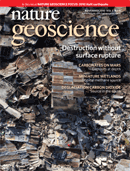

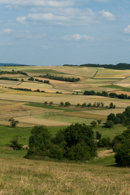 [56]
[56] 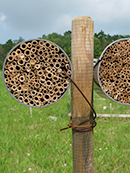 [53]
[53] 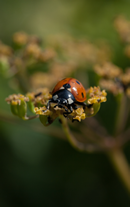 [51]
[51] 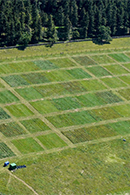 [49]
[49] 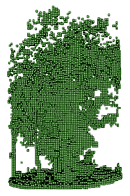 [47]
[47] 
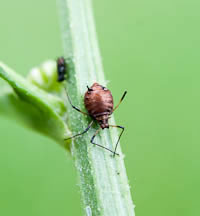
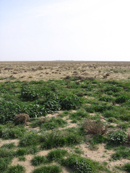
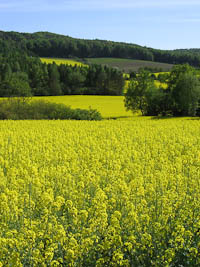 [27] Crop-noncrop spillover: arable fields affect trophic interactions on wild plants in surrounding habitats
[27] Crop-noncrop spillover: arable fields affect trophic interactions on wild plants in surrounding habitats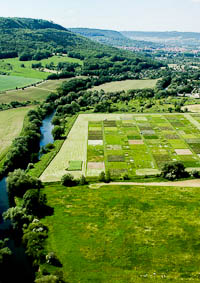 [23] Diversity Promotes Temporal Stability across Levels of Ecosystem Organization in Experimental Grasslands
[23] Diversity Promotes Temporal Stability across Levels of Ecosystem Organization in Experimental Grasslands 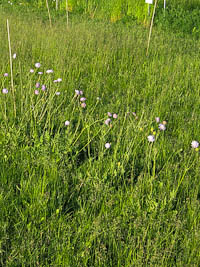 [20] Biodiversity and belowground interactions mediate community invasion resistance against a tall herb invader
[20] Biodiversity and belowground interactions mediate community invasion resistance against a tall herb invader